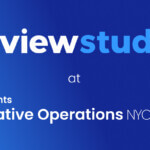Play is key to our early development. It teaches us to use our imagination, to adopt different perspectives, and to collaborate with others. As we move through our early growth stages, play is vital for learning, exploring boundaries, and a wide range of important social skills.
According to Dr. Stuart Brown, founder of the National Institute of Play, “The thing that’s so unique about our species is that we’re really designed to play through our whole lifetime.” But as adults, we tend to view play as frivolous – a luxury at best.
When we lean into this biological predisposition for play (i.e.: playfulness for its own sake) as adults, it can lead us to explore our creativity more deeply. Of course, how we play today might look a little different than it did at a younger age. The benefits, however, of play don’t change nearly as much as you might think.
The Creative Benefits of Being More Playful
Playfulness has been linked to higher levels of creativity and innovation. For example, one study on playfulness and innovation stated: “The link of playful play to creativity and hence to innovation in humans is strong. Considerable evidence suggests that coming up with new ideas requires a different mindset from usefully implementing a new idea.”
So, let’s explore some reasons why being playful can be so beneficial to your creative work.
Play as Practice
Play acts as a simulator of sorts, allowing you to try out ideas and rehearse new situations in a lower-stakes environment. David Rock, director of the Neuro Leadership Institute, and science writer Jay Dixit explain it like this in an article for Psychology Today: “Studies show that play triggers a gentler version of a threat state. As with a real emergency, the brain releases norepinephrine, mobilizing the body’s fight-or-flight response. But unlike the true threat state we enter in the presence of real danger, play does not trigger the release of cortisol.”
On top of this, neuroscientist Jaak Panksepp has identified the need to play as one of 7 primary emotional drives. When the brain perceives something as play, we’re intrinsically motivated to engage with it. If something feels like play, your brain will be far more motivated to pursue it than activities that feel like work. Put another way, it’s easier to get in the zone when playing than working.
Combining these factors – the more accustomed you get to thinking on your feet and quickly adapting to new circumstances during play, the easier it will be to do the same in a higher-stakes environment (like the boardroom).
Ideation
Speaking about the role of playfulness in world-changing inventions in a TED Talk video, Steven Johnson explains: “The playful state of mind is fundamentally exploratory, seeking out new possibilities in the world around us. And that seeking is why so many experiences that started with simple delight and amusement eventually led us to profound breakthroughs.” After all, humankind invented the flute before the fork.
To illustrate this point, Johnson uses the example of computing. The first programable device in history was arguably not a computer but a self-playing organ, created during the Islamic renaissance. This work enabled the creation of musical automatons in 18th-century Paris, resulting in the invention of punch cards and the birth of modern computing. So, if you get the urge to act on your curiosity and pursue a seemingly frivolous idea, who knows where it could lead?
Telling yourself that you’re “only” playing also helps to silence the inner critic that might otherwise keep you from pursuing a potentially valuable idea. As Tim Brown from design firm IDEO puts it: “One of the things we tend to do as adults (…) is we edit things. We stop ourselves from doing things. We self-edit as we’re having ideas.” In low-stakes play scenarios, we are far less likely to edit our ideas.
Creative Collaboration
Effective teamwork appears to be closely linked to playfulness in adults. One study observed: “Playfulness may serve as a lubricant in productive work relations. A playful interaction may help release tension or open up the field for new ideas in a brainstorming situation.”
Speaking to Quartz, organizational psychologist Robert Litchfield suggests that using play in the workplace can help foster a sense of psychological safety by letting people know it’s okay to try things out. As he puts it: “You signal to [employees] that creativity is wanted and you set up an environment for letting that loose.”
The cooperative nature of playing with others feeds into that sense of security. As Tim Brown explains: “Play has rules, especially when it’s group play. When kids play tea party, or they play cops and robbers, they’re following a script that they’ve agreed to. And it’s this code negotiation that leads to productive play.” Playing as a group sets up parameters and ways of interacting that everyone understands, meaning nobody has to agonize about how (or even if) they should contribute.
How to Be More Playful
“For many people, play continues in adulthood and is a major contributor to successful problem solving.”
Sam Wang, Ph.D. and Sandra Aamodt, Ph.D. (Play, Stress, and the Learning Brain)
Making space for play in your life can help you adopt a more spontaneous or playful mindset, enabling you to tap into the creative benefits. But first, it might help to explore what play might look like for us as adults.
According to Dr. Brown, play is a joyful activity performed for its own sake. As he explains: “It doesn’t have a particular purpose, and that’s what’s great about play. If its purpose is more important than the act of doing it, it’s probably not play.”
This makes sense for spontaneous, unstructured activities (like dancing around the room or doodling) but how about games with stricter rules? Well, if you and a few friends decide to have the occasional game of volleyball for the sheer enjoyment of it, that’s probably play. It might feel good to win but ultimately that’s not really why you’re doing it. But if you’re in a competitive league and more focused on winning and doing well, that’s probably not play.
It might help to think of what Dr. Brown is talking about as “pure play” to distinguish it from another interesting concept: “serious play”. In a workplace context, serious play involves intentionally using playful techniques to work on complex problems.
Lego has developed an entire methodology around this strategy, known as “Lego™ Serious Play” (LSP). A facilitator invites participants to brainstorm responses to questions using Lego bricks. It’s been used throughout the world to tackle a range of workplace situations, from problem-solving to stress. Constructive, yes. Pure play? Not exactly.
Here are some ideas for integrating both kinds of play into your routine.
Pure Play
For many of us, the first challenge to overcome is finding the time. When a million and one things are competing for your attention, any time you could spend on something fun but “unproductive” tends to get swallowed up.
Speaking to the New York Times, author and educator Meredith Sinclair advises blocking out a few gaps in your calendar every week where you commit to doing something random and playful. As she explains: “It sounds crazy, like you’re planning to be spontaneous but you kind of have to as an adult.”
Using his years of research, Dr. Stuart Brown has created a list of 8 “Play Personalities”, such as “competitor”, “artist”, and “explorer”. Finding which one resonates with you the most may give you some inspiration about the type of playful activities that will work for you.
Sinclair thinks you should also look to the things that gave you joy as a child for inspiration. If you liked dancing, you could join a class or even just plan the occasional kitchen disco. If you enjoyed crafting (or making a mess!), perhaps try cutting up some old magazines to create a collage.
You could also try introducing some pure play at work. Providing your colleagues are comfortable with it, playing some games together in your downtime could help you all bond, destress, and return to work feeling energized.
Serious Play
Serious play may need a little more structure than pure play, but it can be just as spontaneous and straightforward to set in motion.
You’ve probably been subject to constructive play at a conference or team-building event. Building towers and bridges out of unlikely objects (or just out of plain old paper and tape) is a popular icebreaker because it encourages divergent thinking and collaboration.
Alternatively, upgrade your next brainstorming session with some prototyping by gathering materials to build with (office supplies would do) and then asking everyone to create representations of their ideas. This is an example of how play can help us to articulate our ideas and to relate to the ideas of others.
In his Quartz Interview, psychologist Robert Litchfield explains that physical objects act as “boundary objects” for people with differing ideas: “By having this thing in front of them, they can talk across their functional differences.”
Alternatively, use imaginative play to help you get inside the minds of your audience by asking people to join you in roleplaying a situation. Tim Brown at IDEO sees this as a way to tap into all the knowledge you’ve built up over time: “We’ve gone through lots of experiences in life, and they provide a strong intuition as to whether an interaction is going to work.” Adopting a more playful mindset helps you break through any embarrassment or discomfort you might be feeling about roleplay, enabling you to make the most of your imagination and existing knowledge.
Finally, you could use techniques borrowed from improv to introduce a bit of cooperative play into your brainstorming sessions. Using strategies like the “Yes, and” technique to discuss ideas or potential directions helps people to pull together and to think on their feet.
Make Time to Play
Play helps us to discover ideas, gather insights, adopt alternative perspectives, and connect with others, all things that can make a profound difference to creatives.
Whether you engage in a playful activity for its own sake or use playful techniques to solve serious problems, adopting a more playful mindset can be a major upgrade to your creative process.





